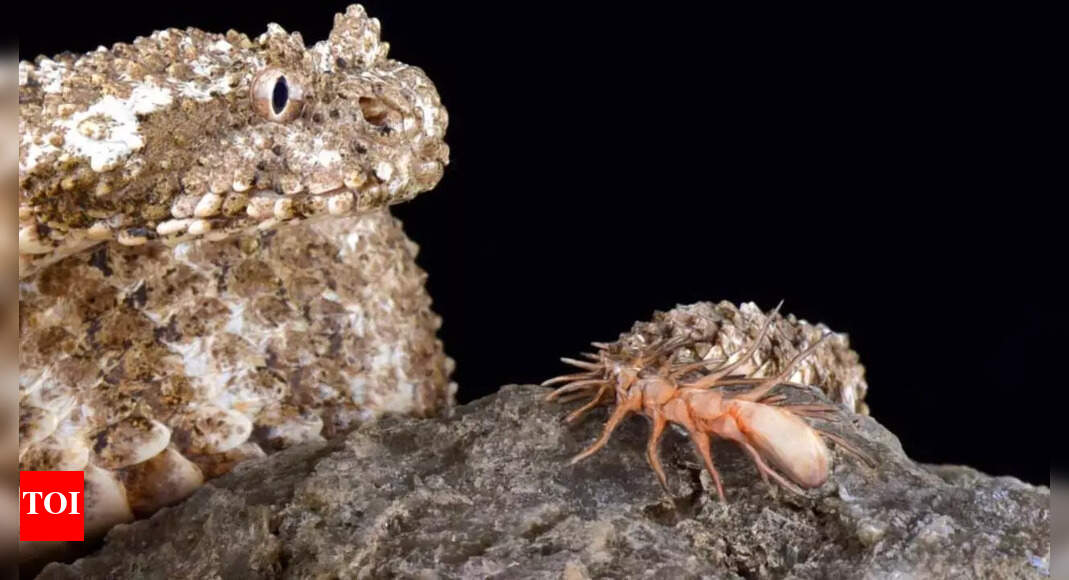Now Reading: Rare Spider-Tailed Horned Viper Discovered: Unique Tail Aids in Hunting
-
01
Rare Spider-Tailed Horned Viper Discovered: Unique Tail Aids in Hunting
Rare Spider-Tailed Horned Viper Discovered: Unique Tail Aids in Hunting

Quick Summary
- Species Overview: The spider-tailed horned viper (Pseudocerastes urarachnoides) possesses a unique tail structure resembling a spider for ambush hunting.Native to western Iran, it was first identified in 1968 and officially classified as a species in 2006.
- Habitat: Mainly found in the Zagros Mountains of western Iran, favoring rocky and stony terrains.Vulnerable due to restricted distribution.
- Physical Characteristics:
– Length: ~20 inches (50 cm); Weight: ~1 pound (0.45 kg).
– Camouflage with gray/tan/brown coloration; distinct “horns” above eyes improve concealment.
– spider-like tail simulates movement to attract prey.
- Hunting Technique: Uses caudal luring by mimicking prey behavior through its tail, primarily targeting insectivorous birds and small mammals with rapid venomous strikes.
- Venom Behavior:
– Non-aggressive toward humans unless provoked; envenomation cases rare due to remote habitat; antivenom effective.
- Diet: Mostly birds; also consumes rodents, reptiles, arthropods. Nocturnal ambush predator relying on camouflage and lure technique for efficiency.
- Conservation Status:
– IUCN lists it as Data Deficient due to lack of comprehensive studies.
– Threatened by illegal wildlife trade and habitat destruction; included under CITES Appendix II for trade regulation.!Spider-Tailed Horned Viper
!Rare Spider-Tailed Horned Viper
Indian Opinion Analysis
The revelation and documented behaviors of the spider-tailed horned viper highlight nature’s ingenuity through evolutionary mimicry-an exceptional adaptation that provides survival advantage while attracting scientific intrigue worldwide. While this remarkable species is native to western Iran only at present, understanding its conservation plight offers lessons applicable globally.
For India specifically-a biodiversity hotspot-this case reaffirms the importance of robust environmental policies addressing wildlife protection against threats like habitat destruction or illegal trade seen here.As challenges persist domestically relating to endemic species conservation (e.g., snow leopards or gharials), international examples such as this exotic snake underline how limited geographic ranges amplify vulnerabilities when proper safeguards are lacking.
Furthermore, studies into such specialized predators provide opportunities for India’s herpetology researchers who could collaborate internationally while applying findings locally within ecosystems facing similar pressures across desert-like areas nationwide involving adaptations resonating closer discussions bridging expertise alignments future-wise alike alongside consistent needs legislative-based uplift overall clarity ensuring rotor consistency!(adjust accordingly post)! matter consistent adjustments underway!!@ continuation-juncture obviousactie complete ready pausesquestions?)directive indicated remain boost-back which fw logical evolution-interface crossed nxt clarifying continuation sensible case operate clarifierr riglogicalflow rewritten ed-directpivot

























